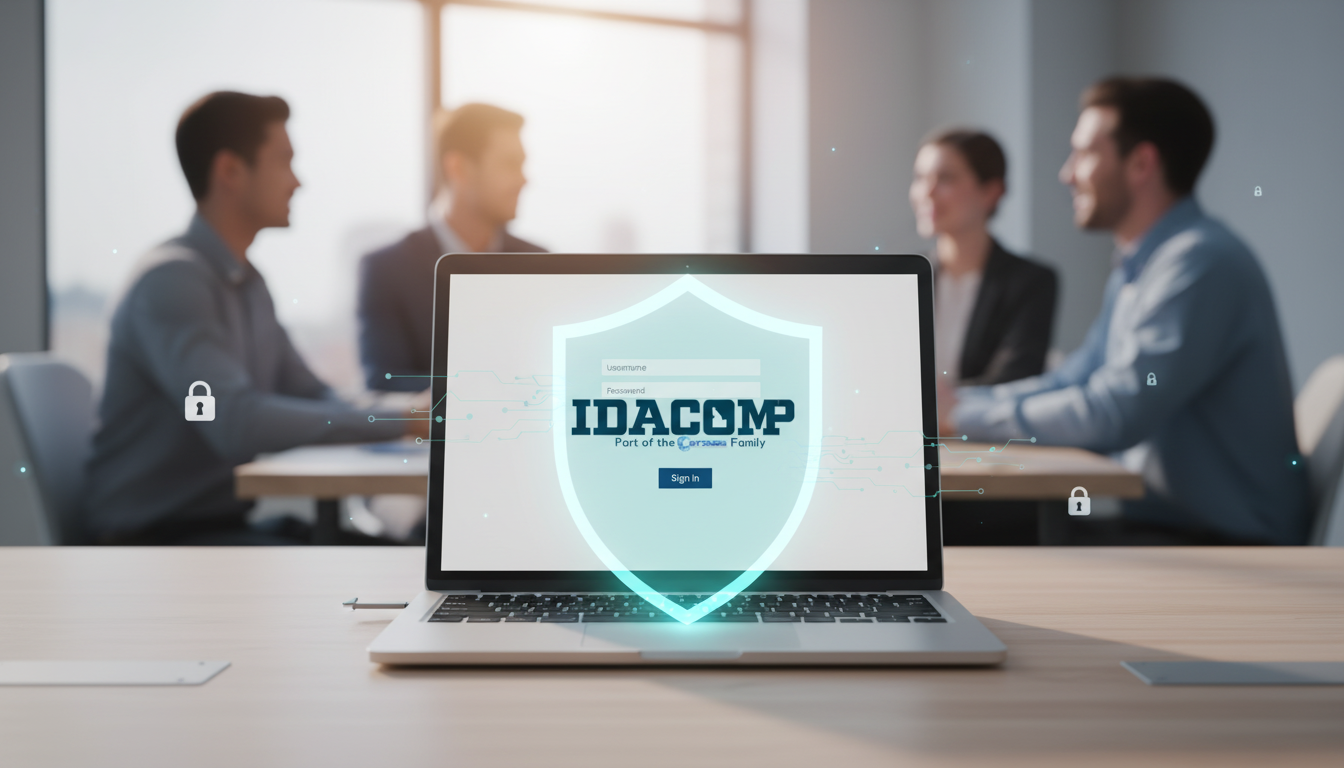October 28, 2025
It’s Time for the Annual Cybersecurity Awareness Month
Every year in October, the tech industry at large gives a hard look at the realm of cybersecurity in an effort to protect data environments, personal information, and security. 2025, like the years before it, will observe numerous changes and advancements in technology. But each technological advancement is a double-edged sword: what benefits us benefits malicious third parties.
That’s why we raise awareness about cybersecurity on all levels. Cybersecurity isn’t exclusive to big tech names or enormous businesses. It’s critical for SMBs, people, school networks, medical facilities, and even critical infrastructure. These days, the importance of quality cybersecurity practices cannot be overstated. The explosion of AI-driven services, internet-facing apps, remote work, cloud networks, and network integration building the IoT demands a strong cybersecurity posture, even for everyday life.
The importance of modern-day cybersecurity
Information is valuable, not just to companies or people, but to hackers. With the integration of internet services in modern devices and contemporary services relying on network connections, information is everywhere. Protecting this invaluable asset is key, but only possible through good education, protective tools, and critical observation skills.
Phishing, for instance, is the go-to tactic for hackers because it can bypass even the most complex cybersecurity defenses. All it requires is attaining sensitive administrator or user information, like login credentials, and that requires deceiving a recipient of a phishing scam. Without proper awareness and education, it’s an easy way to find yourself victimized by fraudulent messages.
From cost, loss of personal security, and enterprise downtime, cybersecurity is more important than ever. It is no longer a field reserved for experts and IT veterans. The need to protect all our information on a consistent basis is critical and one of the driving factors for Cybersecurity Awareness.
The core messages to promote
Awareness is only one small step towards healthy cybersecurity. Applying principles and simple foundations is what matters, leading to long-term, quality protection. While every person, enterprise, and organization is different, the core principles of strong cybersecurity remain the same.
What are key foundations to promote in a business?
Before anything, any enterprise should apply several core values and cybersecurity rules to enhance their data protection. They’re a necessary foundation to ensure that, at the ground up, your enterprise is ready for the changing world of cybersecurity.
Establishment of Rules and Guidelines
Every enterprise is different with its own unique needs, goals, and values. But the core of quality cybersecurity remains the same. You should establish strong internal rules about data policy management, how its handled, stored, and transferred. Ensure that only appropriate parties have access to data relevant to them (also known as network segmentation).
You must adjust policy based on the services you provide. A medical enterprise, for instance, must follow HIPAA procedures. Any business managing online vendor payments must also maintain a strict PII policy.
Fundamental Cybersecurity Training
All staff should have awareness and knowledge of basic cybersecurity principles. This includes phishing awareness, recognizing scams, and awareness of backup policy procedures.
Comprehensive Backup Plans and Procedures
It is also critical to maintain stringent backup plans for disaster scenarios. A disaster scenario can range from malicious intrusion, hardware failure, network loss, damage to operations by way of catastrophe (storms, flooding, fires, etc). In today’s modern world, remaining competitive and operational requires proactive measures. A backup plan gives your team a blueprint when the unexpected occurs.
Knowledge Checks and Threat Awareness
Lastly, another core quality of foundational cybersecurity is continual threat awareness. With AI tools and the simplification of ransomware strategies, hackers have an abundance of growing tools to compromise targets. Reviewing threats likeliest to target your business is important and helps you build proactive strategies to avoid a disaster scenario.
Optimize IT with Partners
As you spread cybersecurity awareness, it is also recommended to seek third parties if your IT infrastructure lacks essential resources. Third parties, whether vendors or managed service providers, offer a range of services that scale with usage and business needs. Third parties are heavily involved with cybersecurity awareness, optimizing and future proofing your enterprise with their infrastructure.
If you’re concerned about compliance, lack of IT resources, and falling short on cybersecurity, a third-party can significantly help.
Remember the key values and principles for Cybersecurity Awareness Month. If you still need additional assistance, consider reaching for help. For more information, contact Bytagig today.

How AI Is Transforming Cybersecurity AI is reshaping cybersecurity by enabling faster, smarter, and more adaptive defenses. AI-Powered Threat Detection Modern security platforms use machine learning to analyze user behavior, network traffic, and system activity. Instead of relying solely on known threat signatures, AI identifies anomalies that may indicate an attack in progress. This allows threats to be detected earlier—often before damage occurs. Automated Incident Response AI-driven tools can automatically isolate compromised devices, block suspicious logins, and alert IT teams in real time. This significantly reduces response times and limits the impact of cyber incidents. Predictive Security Analytics By analyzing historical data and attack patterns, AI can anticipate vulnerabilities and highlight areas that require attention, helping businesses stay ahead of threats instead of reacting to them. How Cybercriminals Are Using AI Unfortunately, attackers are also leveraging AI to improve their tactics. Smarter Phishing and Social Engineering AI-generated phishing emails are more convincing than ever. These messages often mimic real communication styles, making them difficult for employees to identify. Credential Theft at Scale AI allows attackers to automate password-cracking attempts and exploit reused credentials across multiple platforms, targeting cloud accounts and business applications. AI-Driven Business Email Compromise Cybercriminals can now replicate writing styles—or even voices—of executives or vendors, tricking employees into transferring funds or sharing sensitive data. Why Small Businesses Are at Higher Risk Limited In-House IT Resources Most small businesses do not have dedicated cybersecurity teams. This makes it difficult to monitor systems continuously or respond quickly to incidents. Growing Cloud and Remote Work Environments Cloud platforms and remote access increase productivity but also expand the attack surface. Misconfigured permissions and unsecured devices are common entry points for attackers. Compliance and Regulatory Pressure Industries such as healthcare, finance, and professional services must meet strict compliance requirements. Failing to secure data can lead to fines, audits, and reputational damage. Key Steps Businesses Should Take to Prepare for 2026 Strengthen Identity and Access Management Multi-factor authentication, strong password policies, and role-based access controls are essential to protecting accounts from AI-driven attacks. Adopt AI-Driven Security Tools Endpoint detection and response (EDR), AI email filtering, and advanced threat monitoring should be part of every security strategy. Implement Zero Trust Security Zero Trust frameworks verify every user and device, reducing the risk of lateral movement during an attack. Secure Cloud Platforms Businesses must regularly review cloud configurations, permissions, and activity logs to prevent unauthorized access. Invest in Employee Cybersecurity Training Employees remain a key line of defense. Regular training helps teams recognize phishing attempts and avoid costly mistakes. Build a Business Continuity and Disaster Recovery Plan Reliable backups and recovery plans ensure business operations can continue even after a cyber incident. The Role of Managed IT Services in an AI-Driven Security World Partnering with an MSP provides access to tools and expertise that most businesses cannot manage alone. 24/7 Monitoring with Human Oversight AI tools generate alerts, but human experts analyze and respond appropriately—ensuring threats are handled correctly. Predictable Monthly Pricing Managed IT services eliminate surprise costs and make advanced cybersecurity affordable for SMBs. Local Idaho Expertise A local MSP understands regional risks, industries, and compliance requirements, providing more relevant and responsive support. How IDACOMP Helps Businesses Prepare for the Future IDACOMP delivers cybersecurity-first managed IT services designed for small and mid-sized businesses. Proactive monitoring and maintenance AI-powered threat detection Cybersecurity for small businesses IT compliance services 24/7 support and rapid response Local Portland IT expertise Learn more: https://www.idacomp.com/blog For additional insight, see guidance from the U.S. Cybersecurity and Infrastructure Security Agency: https://www.cisa.gov/artificial-intelligence Conclusion — Preparing Now Protects Your Business in 2026 and Beyond AI will continue to shape the future of cybersecurity—for both defenders and attackers. Businesses that act now by strengthening security, improving awareness, and partnering with a trusted MSP will be far better positioned to handle the challenges ahead. With IDACOMP Idaho managed IT services , your business gains the tools, expertise, and strategic guidance needed to stay secure, compliant, and confident as 2026 approaches.

For many Idaho business owners, technology has become the heartbeat of daily operations — from managing client data to running cloud-based software and communication tools. But when computers crash, networks slow, or cybersecurity fails, productivity can grind to a halt. That’s why partnering with a small business computer service provider like IDACOMP is one of the smartest investments your company can make. It keeps your technology stable, your data secure, and your team focused on what really matters: growing your business. What Is a Small Business Computer Service? A small business computer service offers comprehensive IT support and maintenance for your company’s technology systems including hardware, networks, servers, and cybersecurity. Instead of hiring a full-time IT department, many Idaho SMBs rely on local managed service providers (MSPs) like IDACOMP to handle: System monitoring and maintenance Data backup and disaster recovery Virus, malware, and ransomware protection Software updates and cloud setup On-site and remote technical support It’s proactive, reliable, and built around the unique needs of small businesses. Why Every Small Business Needs Professional IT Support ⚙️ 1. Prevent Downtime Before It Happens Reactive “break-fix” approaches are costly and stressful. With managed IT support, your systems are continuously monitored, and potential problems are fixed before they affect your workflow. 🔒 2. Strengthen Cybersecurity Protection Small businesses are frequent targets for phishing scams and ransomware. A dedicated computer service provides multi-layered protection — including firewalls, endpoint monitoring, and employee security training. 💰 3. Save Money with Predictable Costs Hiring internal IT staff can be expensive. Managed IT services let you pay a flat monthly fee for ongoing support, reducing surprise repair costs and improving budget control. ☁️ 4. Secure Cloud and Remote Access Whether your team works from home, in the office, or on the road, a computer service provider ensures your data stays safe and accessible through secure cloud solutions. 🧠 5. Access Local Expertise and Fast Response When problems arise, you need someone who understands your local network and business environment. Working with an Idaho-based team like IDACOMP ensures fast response times and personalized service. Signs You Need a Computer Service Partner If you’ve ever faced these challenges, it’s time to consider professional IT support: Slow computers or network outages Lost files or unreliable data backup Increasing spam or phishing emails Frequent software crashes Lack of a clear cybersecurity plan Partnering with a local small business computer service means you don’t have to face these issues alone. IDACOMP: Idaho’s Trusted Partner for Small Business IT Support At IDACOMP , we specialize in helping Idaho small businesses build strong, secure, and efficient technology systems. Our services include: 24/7 network monitoring and helpdesk support Computer setup, maintenance, and hardware upgrades Cloud migration and backup services Comprehensive cybersecurity solutions Employee security training and compliance guidance Whether you’re managing a construction firm, healthcare practice, or local retail shop, our mission is simple: keep your technology running so your business can keep growing. 📍 Based in Boise, Idaho , we’re proud to support local businesses across the Treasure Valley and beyond with fast, reliable IT care. 👉 Explore our computer and IT support services 📞 Contact us today to schedule a free consultation.

Boise’s business landscape is expanding fast from tech startups and construction firms to healthcare providers and local service companies. With that growth comes a new challenge: keeping data and systems secure. That’s where cyber security companies in Boise play a critical role, helping local organizations stay ahead of digital threats and downtime. Why Idaho Businesses Need Strong Cybersecurity Many small and mid-sized businesses assume that cybercriminals only target large corporations. The truth is, small businesses are among the top targets for cyberattacks. Here’s why: Cybercriminals know SMBs often lack dedicated IT security teams. Ransomware and phishing attacks can halt daily operations instantly. Remote work and cloud systems have created new vulnerabilities. Partnering with a local Boise cybersecurity company ensures quick response, personalized support, and understanding of Idaho’s specific compliance needs. What Makes a Great Cyber Security Partner When evaluating your options, look for these key capabilities: 1. Managed IT Services Round-the-clock monitoring and proactive system care help prevent costly downtime before it starts. 2. Cyber Threat Detection & Response A trusted partner should identify and isolate threats instantly — not hours later — minimizing the risk of business disruption. 3. Employee Security Training Even the best technology can’t stop a careless click. Awareness programs help your staff recognize scams before they cause damage. 4. Cloud & Data Backup Ensure your provider offers secure off-site backups and recovery options to protect business continuity after an incident. 5. Compliance & Risk Assessment Idaho businesses in healthcare, finance, or retail must follow strict data-protection laws. Choose a provider familiar with HIPAA, PCI, and GDPR compliance. IDACOMP: Your Local Cybersecurity Experts in Boise At IDACOMP, we help Idaho’s businesses stay protected and productive with comprehensive IT and cybersecurity solutions. Our services include: 24/7 threat monitoring and remediation Firewall and endpoint protection Data backup and disaster recovery Security training for employees IT infrastructure and cloud management We’re proud to be a Boise-based team serving clients across Idaho with the same professionalism and care we’d expect for our own business. 🔗 Explore our cybersecurity services 📞 Contact us today to schedule a free consultation. Other Trusted Cyber Security Companies in Boise While IDACOMP leads with people-first managed IT and security, Boise also has a growing ecosystem of tech firms focused on: Penetration testing and network audits Cloud infrastructure management Compliance consulting for regulated industries Together, these cybersecurity providers help make Boise a safe, connected, and innovative city for businesses to grow. Secure Your Future Today Whether you’re a local startup or a well-established company, cybersecurity can’t wait. Working with a trusted cyber security company in Boise like IDACOMP ensures your business stays resilient, secure, and future-ready. 👉 Learn how IDACOMP can help protect your business

Discover how Boise managed IT services empower Idaho businesses to boost performance, enhance cybersecurity, and control technology costs. Boise is quickly becoming one of Idaho’s fastest-growing business hubs. From healthcare offices to construction firms and professional service providers, technology keeps local businesses connected and competitive. But as systems grow more complex, many SMBs struggle to keep up with maintenance, cybersecurity, and tech support. That’s where Boise managed IT services come in — offering the proactive support and expertise that businesses need to thrive. What Are Managed IT Services? Managed IT services mean outsourcing your day-to-day technology needs to a trusted provider. Instead of reacting when systems crash, your MSP (Managed Service Provider) constantly monitors, maintains, and protects your network. A Boise-based provider like IDACOMP can help with: 24/7 network monitoring and helpdesk support Data backup and disaster recovery Cybersecurity and threat prevention Cloud management and Microsoft 365 support Hardware, software, and on-site troubleshooting With a strong IT foundation, your business can run smoothly — and stay one step ahead of digital threats. Why Idaho Businesses Choose Managed IT Services ⚙️ 1. Predictable IT Costs Forget surprise repair bills. Managed IT plans offer flat-rate monthly pricing so you can budget with confidence. 🔒 2. Reliable Cybersecurity Cyberattacks aren’t limited to big corporations. Small businesses in Boise face phishing, ransomware, and data breaches daily. IDACOMP’s managed security includes firewalls, real-time monitoring, and employee training — keeping your team alert and your data safe. ☁️ 3. Seamless Cloud and Remote Support Whether you’re managing remote employees or cloud-based systems, managed IT ensures reliable access and performance from anywhere. ⚡ 4. Less Downtime, More Productivity Our proactive monitoring spots and fixes issues before they interrupt your workday — reducing downtime and keeping operations efficient. 💡 5. Scalable for Growth As your company expands, your IT infrastructure scales with you — from adding new users to deploying new apps or office locations. The Local Advantage: Boise-Based IT Support You Can Count On Working with a Boise managed IT services provider means you get local expertise with quick on-site support. IDACOMP understands Idaho’s small-business landscape — from regional compliance standards to connectivity challenges in growing areas. When your systems need in-person care, our technicians are just minutes away — not states apart. IDACOMP: Boise’s Trusted Managed IT Partner At IDACOMP, we deliver end-to-end technology solutions designed for Idaho’s business community. Our services include: 24/7 managed IT and helpdesk support Cybersecurity, firewall, and ransomware protection Cloud services and data backup solutions Employee security training and compliance support IT consulting for growth planning We believe great IT starts with great people — that’s why every client receives personalized service, clear communication, and fast results. 📍 Proudly headquartered in Boise, Idaho, IDACOMP supports businesses across the Treasure Valley and beyond. 👉 Explore our Managed IT Services 📞 Contact us today to schedule a free consultation. Technology should power your progress, not slow you down. With the right Boise managed IT services partner, you’ll gain stability, security, and peace of mind — knowing your systems are in expert hands. IDACOMP combines proactive management, local expertise, and responsive support to keep Idaho businesses secure and productive — every day.

Sometimes the first step on how to stop account hacks isn’t code. It’s a click. A single login involving one username and password can give an intruder a front-row seat to everything your business does online. For small and mid-sized companies, those credentials are often the easiest target. According to MasterCard, 46% of small businesses have dealt with a cyberattack, and almost half of all breaches involve stolen passwords. That’s not a statistic you want to see yourself in. This guide looks at how to make life much harder for would-be intruders. The aim isn’t to drown you in tech jargon. Instead, it’s to give IT-focused small businesses a playbook that moves past the basics and into practical, advanced measures you can start using now. Why Login Security Is Your First Line of Defense If someone asked what your most valuable business asset is, you might say your client list, your product designs, or maybe your brand reputation. But without the right login security, all of those can be taken in minutes. Industry surveys put the risk in sharp focus: 46% of small and medium-sized businesses have experienced a cyberattack. Of those, roughly one in five never recovered enough to stay open. The financial toll isn’t just the immediate cleanup, as the global average cost of a data breach is $4.4 million, and that number has been climbing. Credentials are especially tempting because they’re so portable. Hackers collect them through phishing emails, malware, or even breaches at unrelated companies. Those details end up on underground marketplaces where they can be bought for less than you’d spend on lunch. From there, an attacker doesn’t have to “hack” at all. They just sign in. Many small businesses already know this but struggle with execution. According to Mastercard, 73% of owners say getting employees to take security policies seriously is one of their biggest hurdles. That’s why the solution has to go beyond telling people to “use better passwords.”. Advanced Strategies to Lock Down Your Business Logins Good login security works in layers. The more hoops an attacker has to jump through, the less likely they are to make it to your sensitive data. 1. Strengthen Password and Authentication Policies If your company still allows short, predictable logins like “Winter2024” or reuses passwords across accounts, you’ve already given attackers a head start. Here’s what works better: Require unique, complex passwords for every account. Think 15+ characters with a mix of letters, numbers, and symbols. Swap out traditional passwords for passphrases, strings of unrelated words that are easier for humans to remember but harder for machines to guess. Roll out a password manager so staff can store and auto-generate strong credentials without resorting to sticky notes or spreadsheets. Enforce multi-factor authentication (MFA) everywhere possible. Hardware tokens and authenticator apps are far more resilient than SMS codes. Check passwords against known breach lists and rotate them periodically. The important part? Apply the rules across the board. Leaving one “less important” account unprotected is like locking your front door but leaving the garage wide open. 2. Reduce Risk Through Access Control and Least Privilege The fewer keys in circulation, the fewer chances there are for one to be stolen. Not every employee or contractor needs full admin rights. Keep admin privileges limited to the smallest possible group. Separate super admin accounts from day-to-day logins and store them securely. Give third parties the bare minimum access they need, and revoke it the moment the work ends. That way, if an account is compromised, the damage is contained rather than catastrophic. 3. Secure Devices, Networks, and Browsers Your login policies won’t mean much if someone signs in from a compromised device or an open public network. Encrypt every company laptop and require strong passwords or biometric logins. Use mobile security apps, especially for staff who connect on the go. Lock down your Wi-Fi: Encryption on, SSID hidden, router password long and random. Keep firewalls active, both on-site and for remote workers. Turn on automatic updates for browsers, operating systems, and apps. Think of it like this: Even if an attacker gets a password, they still have to get past the locked and alarmed “building” your devices create. 4. Protect Email as a Common Attack Gateway Email is where a lot of credential theft begins. One convincing message, and an employee clicks a link they shouldn’t. To close that door: Enable advanced phishing and malware filtering. Set up SPF, DKIM, and DMARC to make your domain harder to spoof. Train your team to verify unexpected requests. If “finance” emails to ask for a password reset, confirm it another way. 5. Build a Culture of Security Awareness Policies on paper don’t change habits. Ongoing, realistic training does. Run short, focused sessions on spotting phishing attempts, handling sensitive data, and using secure passwords. Share quick reminders in internal chats or during team meetings Make security a shared responsibility, not just “the IT department’s problem.” 6. Plan for the Inevitable with Incident Response and Monitoring Even the best defenses can be bypassed. The question is how fast you can respond. Incident Response Plan: Define who does what, how to escalate, and how to communicate during a breach. Vulnerability Scanning: Use tools that flag weaknesses before attackers find them. Credential Monitoring: Watch for your accounts showing up in public breach dumps. Regular Backups: Keep offsite or cloud backups of critical data and test that they actually work. Make Your Logins a Security Asset, Not a Weak Spot Login security can either be a liability or a strength. Left unchecked, it’s a soft target that makes the rest of your defenses less effective. Done right, it becomes a barrier that forces attackers to look elsewhere. The steps above, from MFA to access control to a living, breathing incident plan, aren’t one-time fixes. Threats change, people change roles, and new tools arrive. The companies that stay safest are the ones that treat login security as an ongoing process, adjusting it as the environment shifts. You don’t have to do it all overnight. Start with the weakest link you can identify right now, maybe an old, shared admin password or a lack of MFA on your most sensitive systems and fix it. Then move to the next gap. Over time, those small improvements add up to a solid, layered defense. If you’re part of an IT business network or membership service, you’re not alone. Share strategies with peers, learn from incidents others have faced, and keep refining your approach. Contact us today to find out how we can help you turn your login process into one of your strongest security assets. Article used with permission from The Technology Press.

You come into work on Monday, coffee still hot, only to find your email full of urgent messages. An employee wants to know why their login isn’t working. Another says their personal information has shown up in places it shouldn’t. Suddenly, that list of “things to get done” is replaced by one big, pressing question: What went wrong? For too many small businesses this is how a data breach becomes real. It’s a legal, financial, and reputational mess. IBM’s 2025 cost of data breach report puts the average global cost of a breach at $4.4 million. Additionally, Sophos found that nine out of ten cyberattacks on small businesses involve stolen data or credentials. In 2025, knowing the rules around data protection is a survival skill. Why Data Regulations Matter More Than Ever The last few years have made one thing clear: Small businesses are firmly on hackers’ radar. They’re easier to target than a Fortune 500 giant and often lack the same defenses. That doesn’t mean they’re hit less often. It means the damage can cut deeper. Regulators have noticed. In the U.S., a growing patchwork of state privacy laws is reshaping how companies handle data. In Europe, the GDPR continues to reach across borders, holding even non-EU companies accountable if they process EU residents’ personal information. And these aren’t symbolic rules, as fines can run up to 4% of annual global turnover or €20 million, whichever is higher. The fallout from getting it wrong isn’t just financial. It can: Shake client confidence for years. Stall operations when systems go offline for recovery. Invite legal claims from affected individuals. Spark negative coverage that sticks in search results long after the breach is fixed. So, yes, compliance is about avoiding penalties, but it’s also about protecting the trust you’ve worked hard to build. The Regulations and Compliance Practices You Need to Know Before you can follow the rules, you have to know which ones apply. In the business world, it’s common to serve clients across states, sometimes across countries. That means you may be under more than one set of regulations at the same time. Below are some of the core laws impacting small businesses. General Data Protection Regulation (GDPR) Applies to any business around the world that deals with data from EU residents. GDPR requires clear, written permission to collect data, limits on how long it can be stored, strong protections, and the right for people to access, change, delete, or move their data. Even a small business with a handful of EU clients could be covered. California Consumer Privacy Act (CCPA) Gives people in California the right to know what information is collected, ask for it to be deleted, and choose not to have their information sold. If your business makes at least $25 million a year or handles a lot of personal data, this applies to you. 2025 State Privacy Laws Eight states, including Delaware, Nebraska, and New Jersey, have new laws this year. Nebraska’s is especially notable: It applies to all businesses, no matter their size or revenue. Consumer rights vary by state, but most now include access to data, deletion, correction, and the ability to opt out of targeted advertising. Compliance Best Practices for Small Businesses Here’s where the theory meets the day-to-day. Following these steps makes compliance easier and keeps you from scrambling later. 1. Map Your Data Do an inventory of every type of personal data you hold, where it lives, who has access, and how it’s used. Don’t forget less obvious places like old backups, employee laptops, and third-party systems. 2. Limit what You Keep If you don’t truly need a piece of information, don’t collect it in the first place. If you have to collect it, keep it only as long as necessary. Furthermore, restrict access to people whose roles require it, which is known as the “principle of least privilege.” 3. Build a Real Data Protection Policy Put your rules in writing. Spell out how data is classified, stored, backed up, and, if needed, securely destroyed. Include breach response steps and specific requirements for devices and networks. 4. Train People and Keep Training Them Most breaches start with a human slip. Teach staff how to spot phishing, use secure file-sharing tools, and create strong passwords. Make refresher training part of the calendar, not an afterthought. 5. Encrypt in Transit and at Rest Use SSL/TLS on your website, VPNs for remote access, and encryption for stored files, especially on portable devices. If you work with cloud providers, verify they meet security standards. 6. Don’t Ignore Physical Security Lock server rooms. Secure portable devices. If it can walk out the door, it should be encrypted. Breach Response Essentials Things can still go wrong, even with strong defenses. When they do, act fast. Bring your lawyer, IT security, a forensic expert, and someone to handle communications together immediately. Work collaboratively to fix the problem. Isolate the systems that are affected, revoke any stolen credentials, and delete any data that is exposed. Once stable, figure out what happened and how much was affected. Keep detailed notes; they’ll matter for compliance, insurance, and future prevention. Notification laws vary, but most require quick updates to individuals and regulators. Meet those deadlines. Finally, use the experience to improve. Patch weak points, update your policies, and make sure your team knows what’s changed. Every breach is costly, but it can also be a turning point if you learn from it. Protect Your Business and Build Lasting Trust Data regulations can feel like a moving target because they are, but they’re also an opportunity. Showing employees and clients that you take their privacy seriously can set you apart from competitors who treat it as a box-ticking exercise. You don’t need perfect security. No one has it. You do need a culture that values data, policies that are more than just paper, and a habit of checking that what you think is happening with your data is actually happening. That’s how you turn compliance into credibility. Contact us to find out how you can strengthen your data protection strategy and stay ahead of compliance requirements. Article used with permission from The Technology Press.

Does it ever seem like your small business is overwhelmed with data? This is a very common phenomenon. The digital world has transformed how small businesses operate. We now have an overwhelming volume of information to manage employee records, contracts, logs, financial statements, not to mention customer emails and backups. A study by PR Newswire shows that 72% of business leaders say they've given up making decisions because the data was too overwhelming. If not managed properly, all this information can quickly become disorganized. Effective IT solutions help by putting the right data retention policy in place. A solid data retention policy helps your business stay organized, compliant, and save money. Here's what to keep, what to delete, and why it matters. What Is a Data Retention Policy and Why Should You Care? Think of a data retention policy as your company’s rulebook for handling information. This shows how long you hold on to data, and when is the right time to get rid of it. This is not just a cleaning process, but it is about knowing what needs to be kept and what needs to be deleted. Every business collects different types of data. Some of it is essential for operations or for legal reasons. Other pieces? Not so much. It may seem like a good idea to hold onto data, but this increases the cost of storage, clutters the systems, and even creates legal risks. Having a policy not only allows you to keep what's necessary but lets you do so responsibly. The Goals Behind Smart Data Retention A good policy balances data usefulness with data security. You want to keep the information that has value for your business, whether for analysis, audits, or customer service, but only for as long as it’s truly needed. Here are the main reasons small businesses implement data retention policies: Compliance with local and international laws. Improved security by eliminating outdated or unneeded data that could pose a risk. Efficiency in managing storage and IT infrastructure. Clarity in how and where data lives across the organization. And let’s not forget the value of data archiving. Instead of storing everything in your active system, data can be tucked away safely in lower-cost, long-term storage. Benefits of a Thoughtful Data Retention Policy Here’s what a well-planned policy brings to your business: Lower storage costs: No more paying for space used by outdated files. Less clutter: Easier access to the data you do need. Regulatory protection: Stay on the right side of laws like GDPR, HIPAA, or SOX. Faster audits: Find essential data when regulators come knocking. Reduced legal risk: If it’s not there, it can’t be used against you in court. Better decision-making: Focus on current, relevant data, not outdated noise. Best Practices for Building Your Policy While no two businesses will have identical policies, there are some best practices that work across the board: Understand the laws: Every industry and region has specific data requirements. Healthcare providers, for instance, must follow HIPAA and retain patient data for six years or more. Financial firms may need to retain records for at least seven years under SOX. Define your business needs: Not all retention is about legal compliance. Maybe your sales team needs data for year-over-year comparisons, or HR wants access to employee evaluations from the past two years. Balance legal requirements with operational needs. Sort data by type: Don’t apply a one-size-fits-all policy. Emails, customer records, payroll data, and marketing files all serve different purposes and have different retention lifespans. Archive don’t hoard: Store long-term data separately from active data. Use archival systems to free up your primary IT infrastructure. Plan for legal holds: If your business is ever involved in litigation, you’ll need a way to pause data deletion for any records that might be needed in court. Write two versions: One detailed, legal version for compliance officers, and a simplified, plain-English version for employees and department heads. Creating the Policy Step-by-Step Ready to get started? Here’s how to go from idea to implementation: Assemble a team: Bring together IT, legal, HR, and department heads. Everyone has unique needs and insights. Identify compliance rules: Document all applicable regulations, from local laws to industry-specific guidelines. Map your data: Know what types of data you have, where it lives, who owns it, and how it flows across systems. Set retention timelines: Decide how long each data type stays in storage, gets archived, or is deleted. Determine responsibilities: Assign team members to monitor, audit, and enforce the policy. Automate where possible: Use software tools to handle archiving, deletion, and metadata tagging. Review regularly: Schedule annual (or bi-annual) reviews to keep your policy aligned with new laws or business changes. Educate your staff: Make sure employees know how the policy affects their work and how to handle data properly. A Closer Look at Compliance If your business operates in a regulated industry, or even just handles customer data, compliance is non-negotiable. Examples of data retention laws from around the world include: HIPAA: Healthcare providers must retain patient records for at least six years. SOX: Publicly traded companies must keep financial records for seven years. PCI DSS: Businesses that process credit card data must retain and securely dispose of sensitive information. GDPR: Any business dealing with EU citizens must clearly define what personal data is kept, why, and for how long. CCPA: California-based or U.S. companies serving California residents must provide transparency and opt-out rights for personal data. Ignoring these rules can lead to steep fines and reputational damage. A smart IT service provider can help navigate these regulations and keep you compliant. Clean Up Your Digital Closet Just like you wouldn’t keep every receipt, email, or post it note forever, your business shouldn’t hoard data without a good reason. A smart, well-organized data retention policy isn’t just an IT necessity, it’s a strategic move for protecting your business, lowering costs, and staying on the right side of the law. IT solutions aren’t just about fixing broken computers; they’re about helping you work smarter. And when it comes to data, a little organization goes a long way. So don’t wait for your systems to slow down or a compliance audit to hit your inbox. Contact us to start building your data retention policy today and take control of your business’s digital footprint. Article used with permission from The Technology Press.

The cloud can be your greatest asset or your biggest financial headache. One minute you’re deploying apps and scaling infrastructure, and the next you’re hit with a cloud bill that strains your budget. Sound familiar? It's a common business problem. A study by Nextwork also shows that cloud spending is expected to increase by 21.5% in 2025 compared to 2024 globally. Cloud-based services provide small and mid-sized businesses (SMBs) with enterprise-grade tools along with flexibility and scalability. But without proper management, you risk overspending, underused resources, and surprise costs. Efficient small business IT solutions are extremely useful to avoid situations like these. Whether it’s through expert cost tracking, automated scaling, or optimized architecture, the right IT partner can help you succeed in the cloud and turn every dollar into real value. Let's find out how to make cloud spending smart and not risky. Cloud Cost Optimization - Save More, Scale Better Cloud cost optimization is the process of cutting down on some expenses while trying to extract maximum value from the resources spent. However, this is not just about budget cuts but about realigning the purpose of your cloud utilization towards achieving intent, results, and targets. That means: Identifying and cutting out unused or underutilized resources. Reserving capacity where needed for better discounts. Adjusting resource sizes to fit real workloads. Making smarter architecture decisions that support your long-term growth. Cloud cost optimization is more than just management, it’s strategic. Where cloud cost management tracks and reports your usage, optimization takes action. It turns insights into savings, helping you focus your budget on what drives business growth. Why Controlling Cloud Costs is So Hard Before getting into the best practices, it helps to examine why cloud bills tend to spiral out of control: Lack of Visibility: If you do not have any idea of how you are spending your money, that's something to worry about. Cloud spending needs to be transparent and easy to trace across services and teams. Poor Budgeting: Cloud costs fluctuate constantly. Without regular updates and forecasting based on usage trends, budgets go off the rails. Multiple Cloud Services: Juggling services with different pricing models and billing formats makes it hard to get a unified view of your expenses. Wasted Resources: Unused VMs, forgotten test environments, and idle storage buckets quietly rack up costs in the background. Dynamic Workloads: Traffic spikes or seasonal changes can instantly increase your resource usage, and your bill. Complex Pricing: Ever tried deciphering a cloud bill? Between storage, egress, API calls, and licensing fees, it's no easy task. Lack of Governance: Without clearly defined rules for resource provisioning and usage, teams can unintentionally spin up costly environments. Insufficient Training: Cloud inefficiency results from poor or insufficient training related to cloud pricing models. Cloud Cost Optimization Strategies That Work What can SMBs do to take control of their cloud spending and avoid billing nightmares? Here are proven strategies to help optimize your costs: 1. Right-Size Your Resources Don’t pay for horsepower you don’t need. Analyze usage patterns and scale resources (like CPU and memory) to match actual workload demands. Start small and grow only as needed. 2.Turn Off Idle Resources Do a regular audit. Shut down development environments outside working hours. Kill unused instances. Set alerts for long-running resources that shouldn't be active. 3. Leverage Reserved and Spot Instances If your workloads are predictable, reserved instances offer deep discounts. If they’re flexible, spot instances can be a cost-effective alternative. Use both smartly to strike a balance between reliability and savings. 4. Automate Where Possible Use automation tools to handle resource scaling, environment shutdowns, and cost alerts. That way, you’ll never forget to turn something off or accidentally leave a test environment running all weekend. 5. Optimize Your Storage Use the right storage tier for your needs. Move infrequently accessed data to lower-cost storage. Implement lifecycle policies to manage data efficiently over time. 6. Monitor and Adjust Regularly Cloud environments aren’t static. What worked last quarter might be inefficient today. Stay on top of usage trends and adjust resources, configurations, and policies accordingly. 7. Create a Culture of Cost Awareness Make cloud spending a shared responsibility. When engineers and teams understand how their choices impact the bill, they’re more likely to make smarter, more cost-conscious decisions. 8. Use Tagging for Visibility Tag all resources by team, environment, project, or customer. This makes it easier to track who’s spending what and why. 9. Build Governance Policies Set rules for who can deploy what. Enforce limits, approval processes, and naming conventions to reduce sprawl and boost accountability. 10. Align Spending with Business Value Not all high costs are bad. If a feature drives significant revenue or user growth, it may be worth the expense. Use cost intelligence to make strategic investment decisions. 11. Train Your Team Everyone from developers to finance should have a basic understanding of cloud cost implications. This empowers smarter decisions across the board. 12. Don’t Forget About Data Transfer Data egress fees can sneak up on you. Be mindful of how and where you’re moving data. Plan your architecture to minimize these costs. Why Cloud Cost Optimization Pays Off When you put effort into cloud cost optimization, it doesn’t just cut costs but transforms your business operations in many ways: Improved Margins: Lowering cloud costs improves your bottom line, giving you room to invest in other areas. Higher Productivity: With better visibility, your team spends less time chasing invoices and more time building valuable features. Smarter Budgeting: Predictable costs = fewer surprises. You can plan ahead with confidence. Greater Agility: By freeing up resources, you can move faster, experiment, launch, and scale without fear of overspending. New Revenue Opportunities: Identifying which features or products are driving cloud costs can also reveal what’s driving customer engagement and growth. Better Investor Appeal: For tech-focused SMBs, especially in SaaS, strong margins and lean operations make your business more attractive to investors and partners. Take Control of Your Cloud Spend Cloud bills shouldn’t be a mystery, and they definitely shouldn’t be a shock. With a clear strategy and the right tools, optimizing your cloud spend becomes more than just a cost-saving exercise, it’s a smart business move. Instead of waiting for your next invoice to cause concern, take proactive steps now. Evaluate your current infrastructure, eliminate inefficiencies, and align your cloud usage with your business goals. When you manage the cloud effectively, you unlock real opportunities for sustainable growth. Need help streamlining your cloud strategy? Contact us to learn how we can support your business with tailored IT solutions. Article used with permission from The Technology Press.

